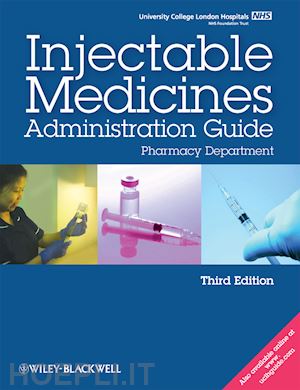I would definitely recommend this book to all staff with an interest and involvement in intravenous drug therapy. The Pharmaceutical Journal There is no doubt that nurses will find this small book useful. It should be available for consultation in any clinical area where drugs are administered to patients by the injectable routes. Journal of Clinical Nursing The safe administration of injectable medicines is key to patient safety. The NPSA recognises the use of injectable medicines is a high risk activity and recommends written information about injectables to be available at the point of preparation. The UCL Hospitals Injectable Medicines Administration Guide, third edition is a practical, accessible guide covering many important aspects of administering medicines by injection. It provides clear, concise information on the preparation and administration of over 245 injectable medicines for adults, paediatrics and neonates. The Guide is an essential resource for nurses and other health care professionals: it provides the key information and advice needed for the safe and effective administration of injectable medicines. The Guides introductory section provides a concise yet comprehensive overview of injectable therapy, including the risks and benefits of IV administration, infusion devices, and pharmaceutical aspects of injectable therapy. For each drug the alphabetically tabulated monographs provide: a practical method of preparation and administration via the IV, IM and SC routes, with risk reduction in mind at every step expert advice from the team of specialist pharmacists at UCLH to ensure safe and pragmatic use of each medicine monitoring advice for the management of reactions that may occur during administration Y-site and syringe driver compatibility data minimum infusion volume data for fluid restricted patients extravasation warnings, pH, sodium content, displacement values, stability and flush data New to this edition: 40 new monographs including recently marketed, unlicensed, rarely used and specialist medicines Detailed advice for the administration of high risk medicines such as heparin, with access to UCLHs medicine related guidelines at www.wiley.com/go/UCLH A colour-coded NPSA risk assessment for every mode of administration for every medicine, to highlight the safest method of administration A user guide and tutorial to give new readers confidence in using and understanding the Guide Revised chapters on administration methods and devices, aseptic non-touch technique, and latex allergy Fully revised and expanded Y-site compatibility section Spiral binding to allow the book to be left open at the relevant page The UCLHGuide is also available electronically at www.uclhguide.com











